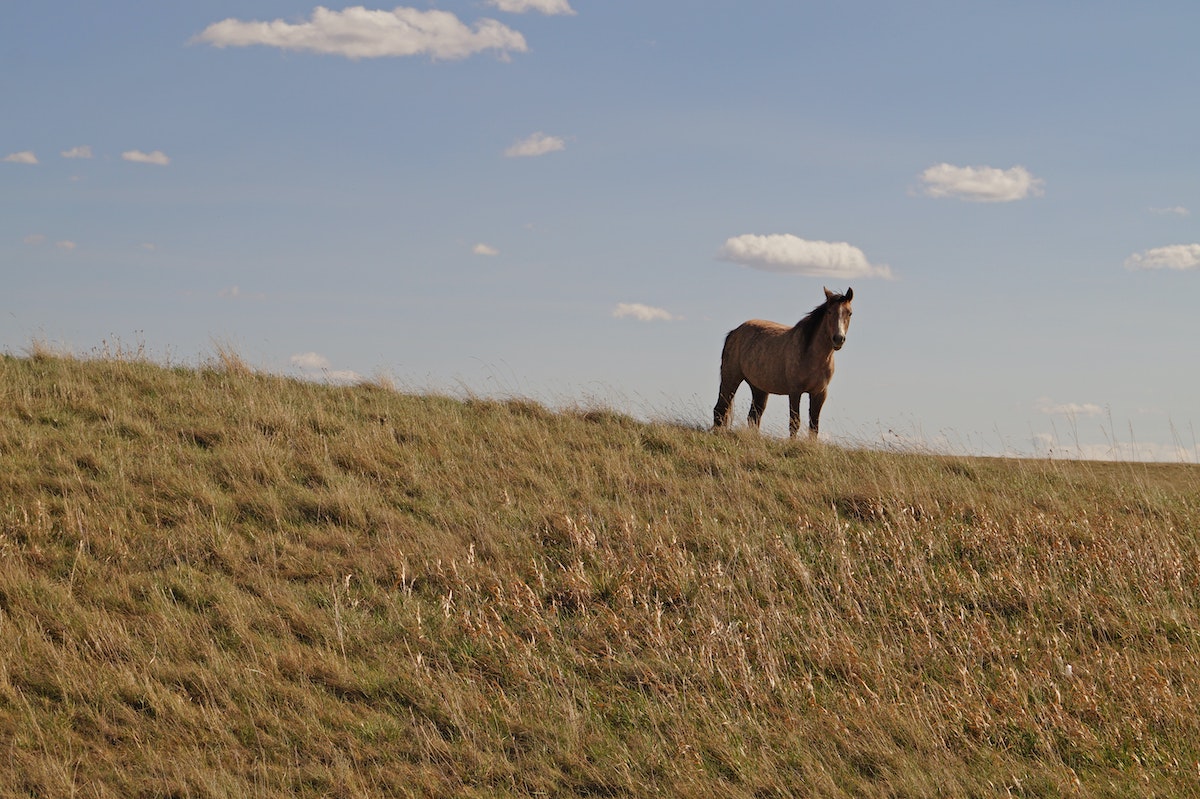It starts with having a good strategy!
Horse pastures require year-round management. In order to provide your horse with quality nutrition, you need to eliminate weeds. And because horses are picky eaters, this can be a hard task. Proper field management, such as using a dry lot, rotational grazing, mowing and good drainage, goes a long way in keeping your horse healthy.
It’s important you develop a good strategy! Try these ideas and make sure to talk to your local ag extension office. They will be a great resource in this weed battle!
Don’t Overgraze Fields
Weeds can easily take over a bare patch of land. It’s essential you provide enough space (two acres per horse) or offer supplemental forage like free-choice hay. You will also need to rotate and rest your pastures. The goal is to prevent your horses from eating the grass down to the ground.
Farm owners will also want to consider overseeding, which improves production and quality. This process consists of planting seed in bare spots and over existing grass cover. Once overseeded, the pasture shouldn’t have horses on it until the new grass begins to grow.
Pull What You Can
Ultimately, pulling the weed from the roots is the best way to eradicate the problem. Though time consuming, weed pulling prevents the plant from growing back and spreading its seed. Certain varieties, such as buttercup and milkweed, are considered poisonous to your horse. They should be eliminated before your horse grazes in that pasture. Others like ragweed take up valuable space for more nutritious grasses. Check with your local ag office to identify common weeds in your area. You’ll want to pull them before they mature!
Mow Before They Seed
You likely won’t be able to pull every weed. In this case, mowing the pasture is a good idea. Try to mow earlier in the season before the weeds flower and spread. This solution won’t eliminate the weed, but can slow the spreading of them. Throughout the season, you’ll want to mow and keep the weeds at an immature stage.
Pastures should be cut to four inches, but never below three. Make it your goal to mow three to four times a year or after each pasture rotation.
Consider Using Herbicides
When all else fails, you may need to use herbicides to rid your pasture of weeds. When applied in the spring and summer, herbicides control annual and biennial weeds. At the start of fall, it can control and eliminate perennials. Make sure you do proper research though! Legume and mixed pastures may be weakened or killed from the chemicals. Many products target a specific weed, so read carefully. Furthermore, any treated field will not be available for turnout for a specific amount of time.
Quality pasture requires eliminating weeds, taking soil samples and choosing a good seed mix. This process is year-round and can be time consuming. The end result in healthy, high-quality nutrition for your horse though. That should be every horse owner’s goal!
**
Emily Fought discovered her passion for horses early on in life. When she isn’t writing about them, you can find her in the barn riding. Although Emily’s background is in dressage, she enjoys cross-training and is an avid trail rider. She resides in Northwestern Pennsylvania with her husband and small dog. Together, they own and operate Humblewood Farm.




